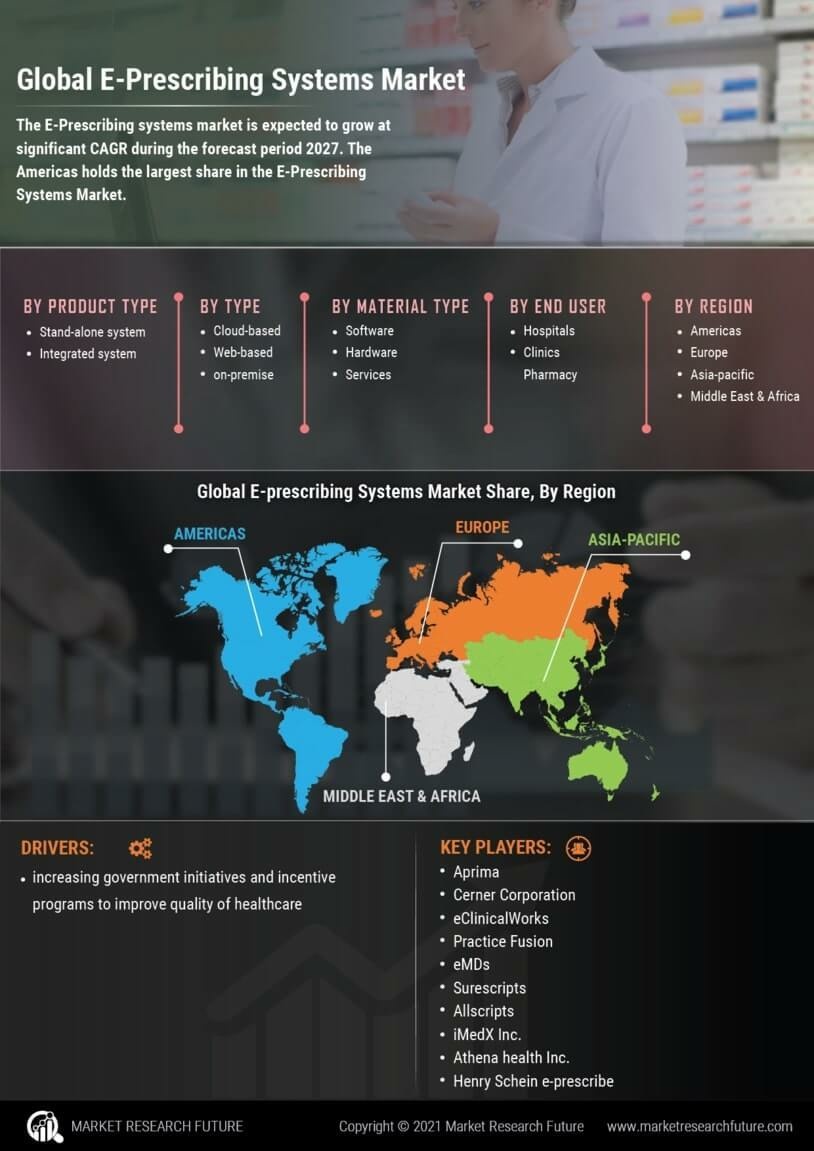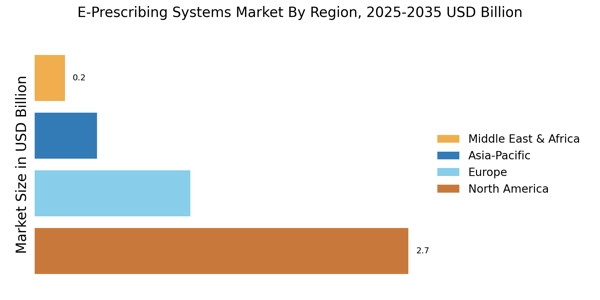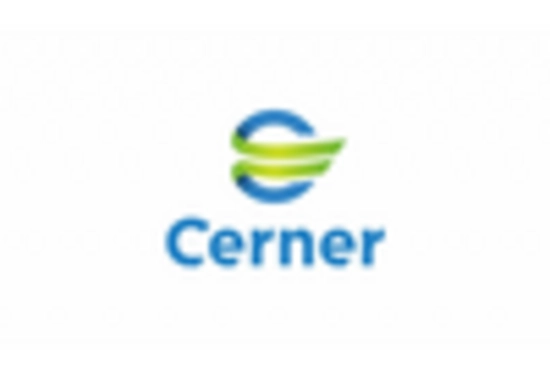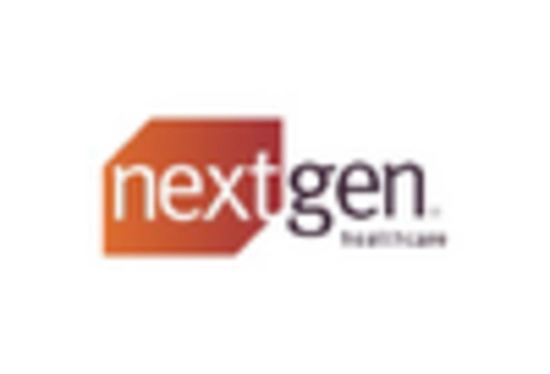Regulatory Support and Incentives
Regulatory frameworks and incentives are pivotal in shaping the E-Prescribing Systems Market. Governments and health authorities are increasingly promoting the adoption of e-prescribing through various initiatives aimed at improving healthcare efficiency and patient safety. For instance, certain regulations mandate the use of electronic prescriptions for controlled substances, thereby encouraging healthcare providers to transition from traditional methods. Additionally, financial incentives for adopting e-prescribing systems are being offered to healthcare organizations, which further stimulates market growth. The alignment of regulatory policies with technological advancements suggests a favorable environment for the expansion of e-prescribing solutions, as stakeholders recognize the potential benefits in terms of cost savings and improved patient care.
Increased Adoption of Telehealth Services
The rise in telehealth services has catalyzed the growth of the E-Prescribing Systems Market. As healthcare providers increasingly utilize telemedicine platforms, the need for efficient and secure prescription management becomes paramount. E-prescribing systems facilitate seamless communication between providers and pharmacies, ensuring that patients receive their medications promptly. According to recent data, the adoption of telehealth has surged, with a notable percentage of patients preferring virtual consultations. This trend indicates a shift in healthcare delivery, where e-prescribing plays a crucial role in enhancing patient care and streamlining workflows. The integration of e-prescribing with telehealth solutions not only improves patient outcomes but also reduces the administrative burden on healthcare professionals, thereby driving the demand for advanced e-prescribing systems.
Rising Demand for Patient-Centric Solutions
The shift towards patient-centric healthcare is significantly influencing the E-Prescribing Systems Market. Patients are increasingly seeking solutions that enhance their engagement in the healthcare process, including medication management. E-prescribing systems that offer user-friendly interfaces and mobile access empower patients to take an active role in their treatment plans. This trend is reflected in the growing number of patients who prefer to manage their prescriptions digitally, leading to increased adherence and better health outcomes. As healthcare providers recognize the importance of patient engagement, the demand for e-prescribing solutions that prioritize user experience is likely to rise, further propelling the market forward.
Growing Emphasis on Data Security and Privacy
As the E-Prescribing Systems Market evolves, the emphasis on data security and patient privacy has become increasingly pronounced. With the rise of cyber threats and data breaches, healthcare organizations are prioritizing the implementation of robust security measures within e-prescribing systems. This focus on safeguarding sensitive patient information not only complies with regulatory requirements but also builds trust among patients and providers. The market is witnessing a surge in demand for e-prescribing solutions that incorporate advanced encryption technologies and secure access protocols. Consequently, vendors are investing in developing secure platforms that address these concerns, thereby enhancing the overall appeal of e-prescribing systems in the healthcare landscape.
Integration with Electronic Health Records (EHR)
The integration of e-prescribing systems with Electronic Health Records (EHR) is a significant driver for the E-Prescribing Systems Market. This integration facilitates a comprehensive view of patient health information, allowing healthcare providers to make informed prescribing decisions. By streamlining workflows and reducing the risk of medication errors, integrated systems enhance the overall efficiency of healthcare delivery. Data indicates that a substantial percentage of healthcare providers are adopting EHR systems, which in turn drives the demand for compatible e-prescribing solutions. The synergy between EHR and e-prescribing not only improves clinical outcomes but also supports regulatory compliance, making it a critical factor in the ongoing evolution of the healthcare sector.


















Leave a Comment